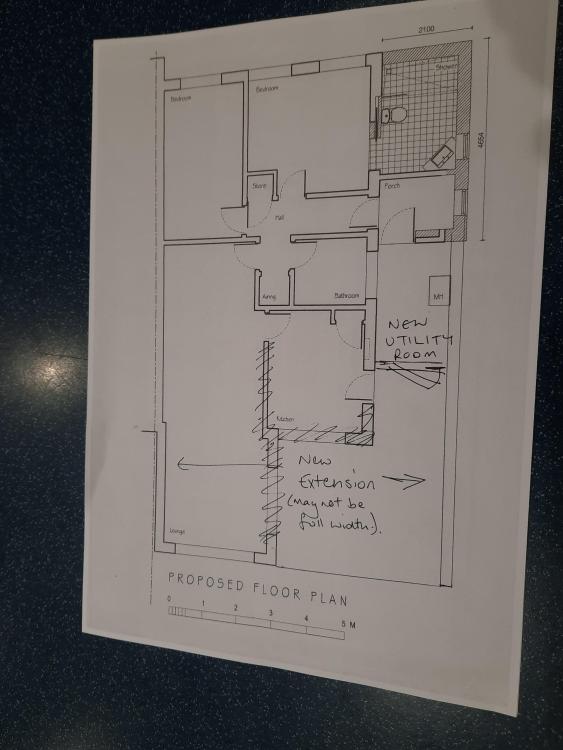Architect advice. Do we need this or not?
After my OH's reluctance to go for PV soon, I needed a plan. We had already talked and visited a local Eco Architect company when researching for our planned Passivhaus for the time we thought we had a plot. I therefore got in touch to see what they offered. We had a zoom meeting when i explained my plans. Basically i wanted someone to help me plan the stages we could do now to help improve the parents comfort, with the intention to do the whole extension renovation when they don't need the bungalow anymore. So I was thinking cavity wall insulation/triple glazed windows to the front bedrooms (we wouldnt change this when extending) and PV with battery.
But on talking to the architect, it was suggested for them to help, we needed the long term plan finalised first, which i guess makes sense. They suggested they help us come up with a plan for the extension and then they could make suggestions for several levels of build - Passihaus, AEBC retrofit standard at 50kWh/m2 and EnerPHit. they produced a proposal;-
Helping to prepare a phased approach will be a further cost which could be up to £2k.
But when I said that my planned budget for the whole job was £100k, I was astonished when the architect suggested we'd need up to twice that! That just would not be doable - the place would never be worth that much being spent on it. I dont mind spending a good amount to make it a lovely place for us to live into our old age but at that rate, it would be cheaper to just make it comfortable with a standard extension and spend the rest on additional heating to keep us warm. We'd never get anywhere near that back, even with lower bills.
My calculations -
PV and Battery 10k
new windows to front and cavity insulation 10k
new extension to rear 80k including airtightness tapes, underfloor heating in the rear half, MVHR.
But maybe I am being unrealistic. It woud not be a huge extension and we'd keep most of the internal walls.
The plan above shows the extra space we have to work with. When he did the shower room, Patrick moved the wall out slightly in the porch, and when he put in the window, he added a lintel suitable for the front door to be moved to the side, leaving the old front door as the door into the new utility room. we were already thinking ahead.
The plan now is to have a chat with our builder, Patrick, and see what he suggests. I know he has done a Passivhaus and so knows how to build well. I trust him to do an excellent job and with the advice of folks on here, I hope to be able to come up with a plan for the extension then a phased scheme of work which hoepfully Patrick can help with.
And I am going on an airtightness tape workshop soon so I can help with work too.





8 Comments
Recommended Comments
Create an account or sign in to comment
You need to be a member in order to leave a comment
Create an account
Sign up for a new account in our community. It's easy!
Register a new accountSign in
Already have an account? Sign in here.
Sign In Now